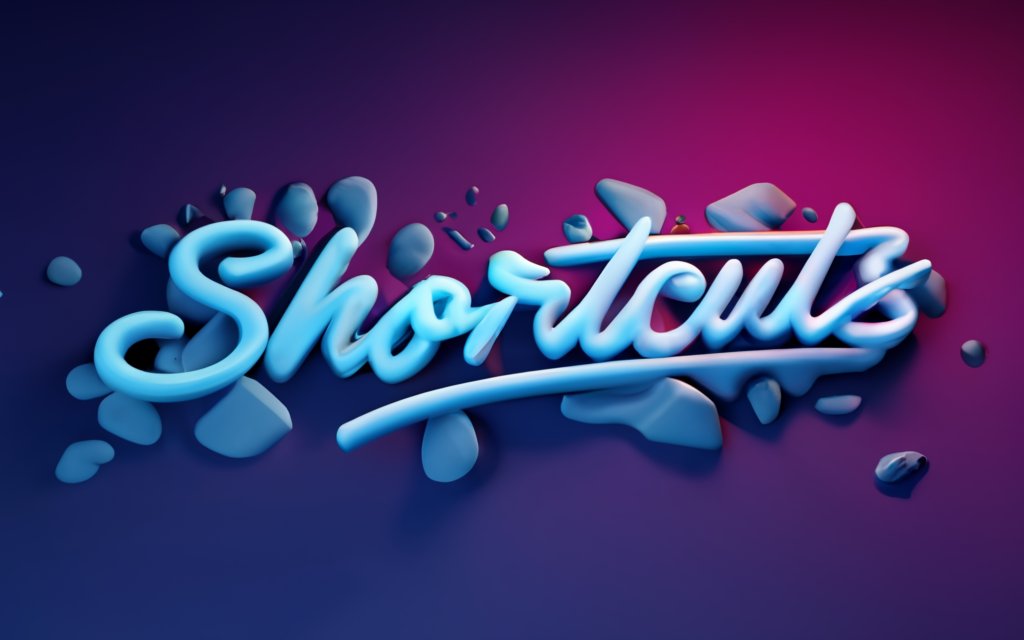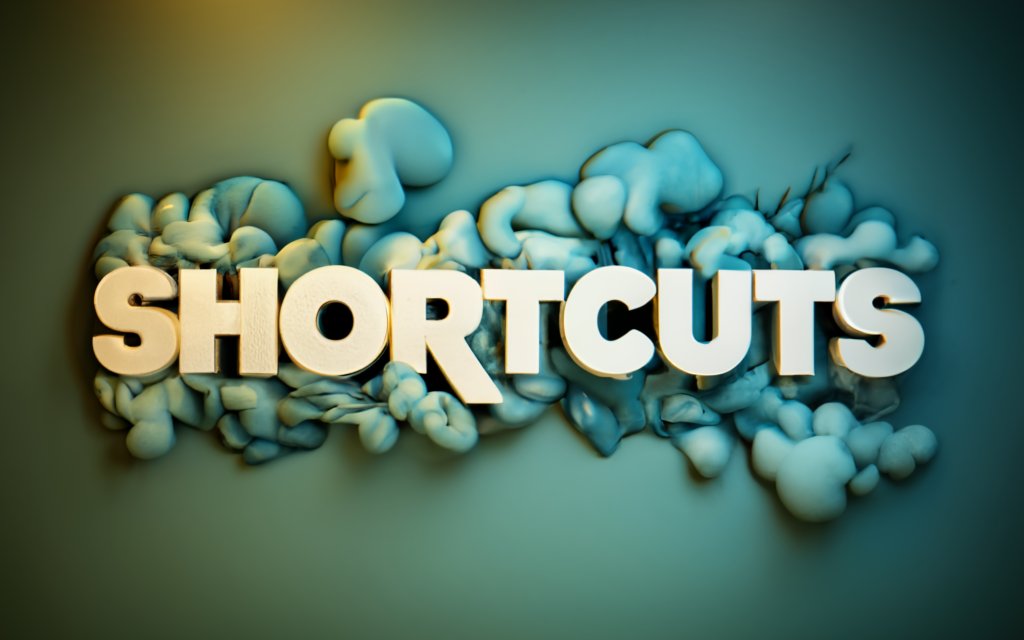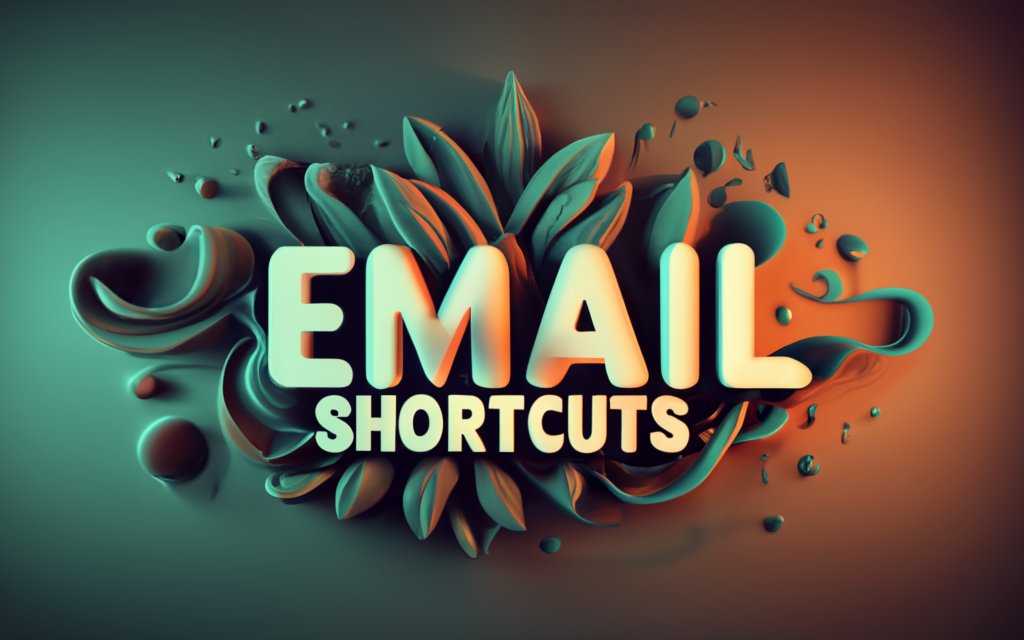Email weighing you down? Unlock the secret shortcuts that will transform your inbox from overwhelming to optimized. iOS and Gmail shortcuts, custom automations, and organization tips inside!
Streamline Your Gmail Workflow with Custom Keyboard Shortcuts
Let’s be honest – who actually enjoys sitting in front of their inbox, manually archiving and deleting emails one by one? Not me, that’s for sure! If the thought of sorting through hundreds of unread messages gives you a headache, you’re not alone. But what if I told you there was a better way?
With Gmail’s custom keyboard shortcuts, you can master your inbox in minutes instead of hours. Read on to learn how activating these handy shortcuts can seriously improve your email efficiency.
Activate the Keyboard Shortcut Function in Gmail
Before diving into specific shortcuts, you first need to enable the keyboard shortcut functionality in your Gmail settings:
- Click the gear icon in the top right corner and select Settings.
- Click the Advanced tab.
- Scroll down and turn on Keyboard shortcuts.
- Don’t forget to click Save Changes at the bottom!
And that’s it – you’re ready to utilize shortcuts to streamline common Gmail tasks. Keep reading for the essentials.
Essential Gmail Shortcuts for Efficient Email Management
Keyboard shortcuts are like cheat codes for leveling up your Gmail skills. Here are some of the most useful shortcuts for archiving, composing, navigating, and more:
Archive, Delete, and Mark as Read/Unread
Tired of mousing over to the teeny Archive and Delete icons? With these shortcuts, you can moderate your inbox from your keyboard:
- e – Archive
- # – Delete
- Shift + i – Mark as read
- Shift + u – Mark as unread
For rapid inbox cleaning, first select all emails on the page with Shift + a, then hit e to archive or # to delete.
Compose and Reply Faster
Drafting new messages and replies is a breeze with shortcuts:
- c – Compose a new message
- r – Reply
- a – Reply all
- f – Forward
Pro tip: add Shift (e.g. Shift + r) to open in a new window.
Navigate Conversations and Labels
Keyboard shortcuts also make navigating between messages a snap:
- p – Previous message
- n – Next message
- g then i – Go to inbox
- g then s – Go to starred
- g then l – Go to label
Jumping to specific labels helps when you want to quickly check important folders.
With keyboard shortcuts enabled, you can stop dragging your mouse all over your inbox and start moderating your messages like a pro. It may take some time to build up the muscle memory, but once you get the hang of these shortcuts you’ll be archiving, replying, and deleting faster than ever. Give them a try and watch your productivity skyrocket!

Create Custom iOS Shortcuts to Automate Repetitive Email Tasks
If you find yourself frequently carrying out the same manual email-related tasks, it may be time to let automation take the wheel. iOS Shortcuts allows you to build customized workflows that can save you tons of time on common email actions. Read on to learn how Shortcuts can help automate repetitive email tasks.
An Introduction to the iOS Shortcuts App
For the uninitiated, Shortcuts is Apple’s automation app that comes pre-installed on newer iPhones and iPads. It allows you to create powerful automations and workflows without any coding required.
To get started, simply open the Shortcuts app and tap the “+” to begin building your first Shortcut. You can add actions like sending emails, getting calendar events, running calculations, and more. The key is stringing together sequences of actions so you can automate multi-step tasks with a single tap.
Build a Custom Email Template Shortcut
One way Shortcuts can seriously improve your email efficiency is through custom email templates. Follow these steps:
- Create a new Shortcut in the app.
- Add a Text action where you’ll insert your template text.
- Use the “\n” symbol to create new lines between paragraphs.
- Add Markdown formatting like bold or italics to spice it up.
- Add a Mail action and select your template text as the body.
Insert Common Greetings and Signatures
In the Text action, include any greetings, signatures, or boilerplate content you find yourself copying and pasting frequently:
Hello [Name],
I hope this email finds you well! Let me know if you have any other questions.
Best,
[Your Name]
[Your Company]
Add Personalized Fields Like Name and Company
Take your template a step further by integrating dynamic fields that auto-populate for each recipient.
In the Text action, tap the “+” to add special fields like Name, Company, Email Address, and more. The Shortcut will pull this info from your contacts and insert it automatically when run.
Automate Emailing Meeting Notes with a Shortcut
Shortcuts can also help streamline processes like sending follow-up emails after meetings or calls. Build a workflow to automatically pull meeting details from your calendar and email comprehensive notes.
Extract Key Points from Calendar Entries
Add a “Get Calendar Events” action and configure it to get event details like title, notes, attendees, etc. Then use text actions to extract just what you need for your summary email.
Generate and Format a Summary Email
Use the extracted information to build a formatted email body with a greeting, key takeaways, action items, and signature. Add a Mail action to send the summary to recipients right from your Shortcut.
With just a bit of setup, Shortcuts can save you from repeatedly performing manual email tasks. Take advantage of the automation capabilities to give yourself a break!

spamtext Shortcuts – The Controversy Around SMS Spamming
With the power of iOS Shortcuts, it’s technically possible to create automations that spam or flood someone’s phone with texts. However, these “spamtext” shortcuts tread ethically dubious ground. While they may seem harmless for pranking friends, sharing or downloading sketchy spam shortcuts comes with risks.
Understand the Ethical Implications Before Building Spam Shortcuts
While spamtext shortcuts may appear innocuous, consider the broader implications. Even playful spam could potentially:
- Overwhelm or negatively impact recipients without their consent
- Lead to stress, anxiety, or blocking if taken too far
- Consume excessive bandwidth resources
- Violate telecom regulations in certain regions
Before creating or using these shortcuts purely for amusement, carefully reflect on how it could affect others. The golden rule applies here.
Use Caution When Sharing or Downloading Potential Spam Shortcuts
If you do encounter spamtext shortcuts in the wild, exercise caution before installing or spreading them further. Here are tips for staying safe and ethical:
Review Privacy Policies and Developer Reputation
Vet any spamtext shortcuts by first examining the developer’s profile and privacy policy (if they have one). Avoid installing shortcuts from unknown creators or sources. Stick to reputable outlets like RoutineHub that review for quality and safety.
Validate Shortcut Actions Before Installing
Responsibly review the full shortcut actions before adding it to your device. Make sure you understand exactly what it will do before running it. If something seems suspicious, report the shortcut through the proper channels.
While some may build and spread SMS spam shortcuts without harmful intent, the consequences can potentially be serious. Before tapping into this controversial capability, carefully weigh the implications. If opting to use or share such shortcuts, do so in an informed, ethical manner.
At the end of the day, just because a technology enables something doesn’t necessarily mean we should do it. While iOS Shortcuts offers powerful automation, it’s up to us as users to make sure we’re wielding that power responsibly.

Shortcuts for Email Productivity on Other Platforms
While iOS offers robust automation capabilities, shortcuts aren’t limited to the Apple ecosystem. Here are some options for streamlining email workflows using other platforms and services:
Custom Hotkeys for Gmail and Outlook
Most major email providers allow users to create custom keyboard shortcuts for frequent actions. Take advantage of these to optimize your inbox experience:
- Gmail: Head to Settings > Keyboard Shortcuts and enable the function. Then customize shortcuts under Settings > Advanced > Custom keyboard shortcuts.
- Outlook: Go to File > Options > Customize Ribbon to designate hotkeys for different commands like Reply or Archive.
Tailor the shortcuts to fit your unique emailing style for efficiency gains.
IFTTT for Connecting Email to Other Apps and Devices
IFTTT (If This Then That) is an automation platform that bridges together different apps, services, and devices. The options for supercharging your email workflow are virtually endless with IFTTT.
Forward Emails to Evernote or Google Docs
Automatically save important conversations from your inbox into tools like Evernote or Google Docs for reference. Create an Applet with a Gmail trigger and Evernote or Google Drive action.
Create Location-Based Email Automations
Building on iOS Shortcuts, IFTTT can trigger actions based on where your phone is. Set up an Applet so emails automatically get marked as high priority when you arrive at work.
With IFTTT, you can build personal workflows that connect your inbox to other productivity and lifestyle tools. Browse Applets or create your own to boost efficiency.
While iOS Shortcuts and custom hotkeys provide powerful email automation, don’t limit yourself to one platform. Exploring tools like IFTTT unlocks new possibilities for streamlining workflows across multiple apps and services.
The key is identifying redundant tasks you frequently perform manually, then finding ways to automate based on your unique needs. Build up your personalized toolkit of shortcuts, hotkeys, and cross-app automations tailored for peak email productivity.

Maximizing Inbox Efficiency with Email Organization Tips
Shortcuts and tools provide useful hacks, but organizing your inbox ultimately requires establishing habits and systems. Implement these email organization tips to hit inbox zero like a pro:
The 2-Minute Rule for Rapid Email Triage
The 2-minute rule is a simple yet effective tactic for plowing through your inbox quickly.
Follow these steps:
- Set a timer for 2 minutes.
- Rapidly browse unread emails, using senders and subject lines to make quick triage decisions.
- Before time’s up, tag any emails that need further attention as “Follow Up” or star them.
- Archive or delete any remaining emails in your inbox when the timer ends.
This forces you to make speedy decisions on what requires immediate action vs. what can be cleaned up and handled later. 2 minutes may seem short, but you’ll be amazed at how much you can process once you get into the rapid triage mindset.
When to Use Flags, Labels, Folders, and Rules for Email Sorting
Organizing your inbox into logical sub-folders and categories streamlines management. Consider when to use the following tools:
Flags – Temporary markers for emails needing follow-up. Remove once resolved.
Labels/Folders – For sorting emails into permanent categories like Clients, Receipts, Newsletters, etc.
Rules – Automatic filtering that files incoming mail based on criteria like sender, keywords, etc.
The Difference Between Gmail Labels and Folders
Labels may seem identical to traditional folders, but there’s an important distinction in Gmail:
- Labels – Virtual folders that an email can have multiple of simultaneously
- Folders – Email only exists in one singular folder
Leverage labels for flexible categorization that works across multiple folders.
Assign Keyboard Shortcuts to Custom Labels
To quickly access key labels from your keyboard, go to Settings > Keyboard and map custom hotkeys to labels.
Final Thoughts on Shortcuts for Email Productivity
After exploring the various options for shortcuts, automations, and organization tactics, you hopefully feel empowered to optimize your own email workflow. Here are some key takeaways:
- Activate keyboard shortcuts in your email platform for quick moderation. Target the repetitive actions wasting your time manually.
- Build custom iOS Shortcuts to automate templated responses, meeting follow-ups, and other common workflows. Let automation handle the busywork so you can focus on important tasks.
- Use IFTTT to connect your inbox to other apps for cross-platform workflows. The possibilities are endless when email triggers can interact with your other tools.
- Don’t ignore old-fashioned organization. Tactics like the 2-minute triage and labeling ensure efficiency gains remain intact.
- Be responsible if exploring spamtext shortcuts. While possible, understand the ethical implications and risks involved first.
- Find the right balance of automation. Shortcuts improve productivity but over-reliance can reduce engagement. Set boundaries aligned with your needs.
Adopting even a few shortcuts and organization habits often yields noticeable time savings over the course of a week. But explore new solutions slowly and deliberately rather than all at once.
Monitor how your energy levels fluctuate as your workflow evolves. The goal should be reaching “flow state” where you’re highly engaged, not burned out by distractions or overwork.
Email will likely remain a central communication mechanism for the foreseeable future. Investing some effort up front into optimizing your inbox pays continuous dividends by reducing frustration and wasted hours over time.
Shortcuts allow us to work smarter, not harder. But remember that efficiency is a means to an end – it creates space for meaningful work and relationships. Keep the bigger picture in mind while implementing shortcuts to maintain balance and perspective.
At the end of the day, don’t become so obsessed with productivity that you miss out on life’s joys. Shortcuts improve email efficiency, but your inbox does not define your worth.

Key Takeaways: Master Shortcuts in iOS for Email Productivity
- Enable keyboard shortcuts in Gmail and customize hotkeys for frequent actions like archiving, deleting, replying, and jumping to labels.
- Build iOS Shortcuts to automate repetitive email tasks like sending templates, meeting summaries, and more.
- Use automation platforms like IFTTT to connect your inbox to other apps and create cross-platform workflows.
- Implement organization tactics like the 2-minute triage and consistent labeling to maintain inbox efficiency.
- Explore spamtext shortcuts carefully by reviewing ethics, privacy policies, and actions before installing or sharing.
- Find the right balance of automation for your needs and monitor how workflow changes impact your engagement and energy levels.
- Don’t become so obsessed with productivity that you lose sight of what matters most—shortcuts improve efficiency but don’t define your worth.
Frequently Asked Questions
Q: What are some good starter keyboard shortcuts to try in Gmail?
A: Great beginner shortcuts include c for compose, r for reply, e for archive, # for delete, and g then i to jump to your inbox.
Q: Can I use iOS Shortcuts on Android or other devices?
A: Unfortunately Shortcuts is an Apple app exclusive to iOS, iPadOS, and Mac. However, tools like IFTTT provide similar automation capabilities across platforms.
Q: Is it safe to install spamtext shortcuts from random sources?
A: No, it’s generally risky to download and run spamtext shortcuts without vetting the developer and actions first. Use trustworthy sources and caution.
Q: How can I create filters and rules to automatically sort incoming emails?
A: In Gmail, click the settings gear > See All Settings > Filters and Blocked Addresses to create rules that apply labels, forward, etc. based on criteria.
Q: What are some examples of useful IFTTT applets for email?
A: IFTTT can forward emails to Evernote or Google Docs, auto-snooze low priority mail, trigger notifications on your phone for key senders, and more.
Q: What’s the best strategy for a clutter-free inbox?
A: The two-minute daily triage, plus consistent labeling and sorting with flags and rules will keep your inbox organized over time.
Q: How can I avoid burnout when optimizing my email workflow?
A: Monitor your energy levels closely. Over-automation can reduce engagement, so find the right balance aligned with your needs.

